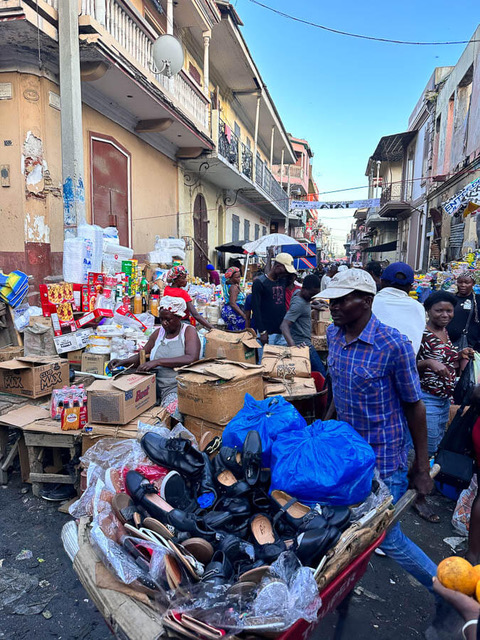Haiti is an actual country that occupies one third of the island La Española (Hispaniola), a Caribbean island that it shares with the Dominican Republic, and a nation popularly known for being the first country to ever be liberated by slaves (1803).
The Spaniards had exterminated the entire local population of the island – the Taíno – shortly after Christopher Columbus and his crew set up their first settlement in the New World but, when they discovered the richer lands of the Aztec, Mayan, and Inca Empires, they quickly forgot about it, a moment which other foreign super powers such as France took advantage of.
Haiti fell under French rule and, over the following decades, the new colonists transformed Haiti into their central sugar producer by importing hundreds of thousands of slaves from West Africa who, eventually, rebelled against their French masters.
When Haiti got its independence in 1803, many of those slaves had been born in Africa, but they became Caribbean overnight.
This is what truly fascinates me about Haiti, a barely visited country located at the heart of the Caribbean that still keeps its West African essence, visible in the art, music, religion, and the West African chaos that has always attracted the most intrepid travelers.
need to know for traveling in Haiti
Quick facts
Capital: Port-au-Prince
Population: 11 million (84th)
Language: French and Haitian Creole are official languages. French is used by the administration and spoken by most well-educated Haitians. The Creole uses many French words but its grammar is purely West African.
Area: 27,800 km2 (143rd largest country)
Visa
A free visa on arrival is available at both the airport and land borders.
Safety
According to the media, Haiti is today a state of anarchy ruled by gangs who spend their time kidnapping and killing each other over territory.
To some extent, this is true but these issues are only happening in certain areas of Port-au-Prince, perhaps in 50 or 60 per cent of the city. The rest of the country is safe to travel, even for independent travel.
Best time to visit
October to March is the best time to visit the country, when the skies are usually clear and the weather is mostly pleasant. There’s Carnival in February too.
April to June is the rainy season, while August to September is the main hurricane season.
Money
The official currency is Haitian Gourde
1 USD = 150 HTG
You can find ATMs that accept foreign cards in Port-au-Prince and Cap-Haïtien. You can also pay by card in most hotels but the rest of Haiti is a cash economy.
Budget: starting at $80 a day for budget travelers, Haiti is quite pricey, especially accommodation.
Is independent travel possible in Haiti?

With all the recent issues Haiti is going through, travelers wonder whether backpacking across Haiti is possible or not and the good news is that it actually is.
However, in my humble opinion, this isn’t a country for beginners and it should never be your next step if you have only traveled in the easy countries of the Americas.
In my experience, there is very little infrastructure, the locals try to scam you constantly and the overall experience doesn’t differ much from traveling in West Africa.
Top experiences in Haiti
Hiking up to Citadelle Laferrière
No kidding, this is one of the best forts I have ever seen, and the views from there are gorgeous.
Attending a voodoo ceremony
Voodoo ceremonies are performed every week, a clear West African heritage.
The art scene in Pétionville
There’s a lot going on in Port-au-Prince, and the art scene in the refined district of Pétionville is a must-see.
The coast around Labadee
Haiti has the most beautiful coastline in the island, and Labadee has the cleanest shore and water.
tips for Haiti
Accommodation
Hotels in Haiti are very basic and expensive. For a basic single room in a relatively decent hotel (with water and electricity issues) you may pay around $50.
There are hotels in all main cities.
Getting in
Port-au-Prince has an international airport connecting with Miami (American Airlines) and New York City (jetBlue). The local airline Sunrise Airways does fly to Santo Domingo but flights are pricey and it’s better to just take a bus.
If traveling overland, there are daily buses from Santo Domingo to both Cap-Haïtien and Port-au Prince but you can also cross on foot.
How to move around
Within cities and to nearby towns, the local travel is small pick-up trucks called tap tap. You can get on and off anywhere, just make sure of the vehicle’s destination.
To move between cities, you just need to go to a bus station and take a minivan. There are minivans going everywhere across the country.